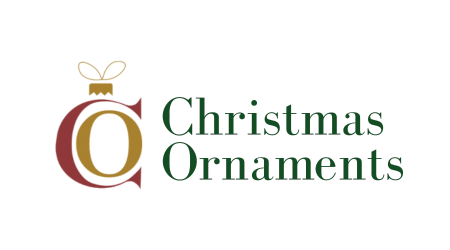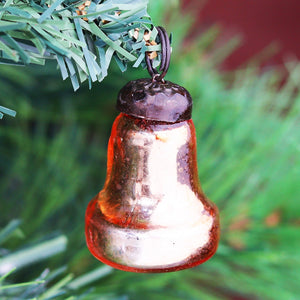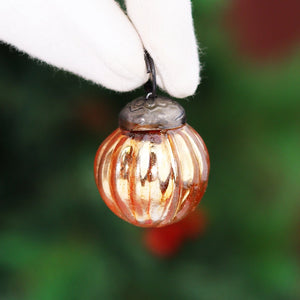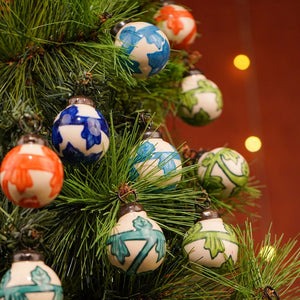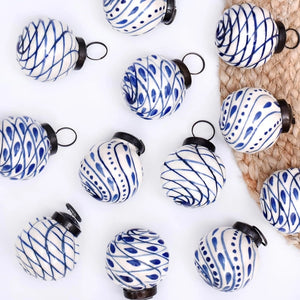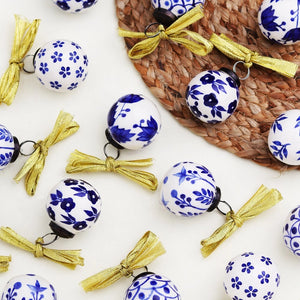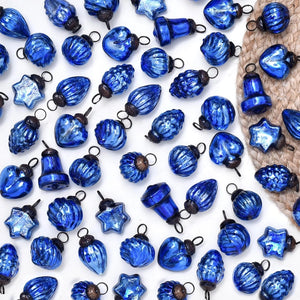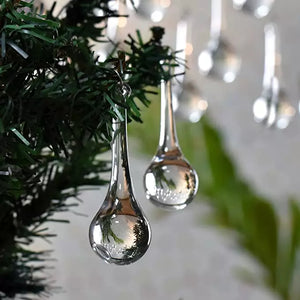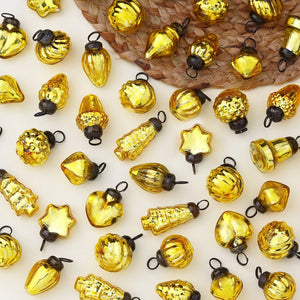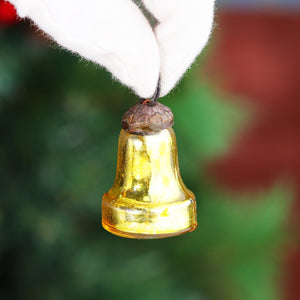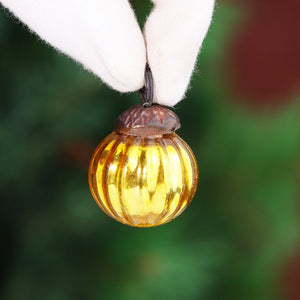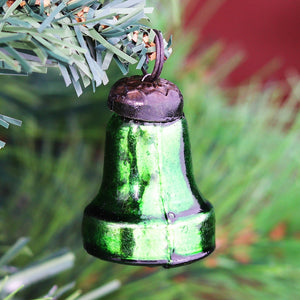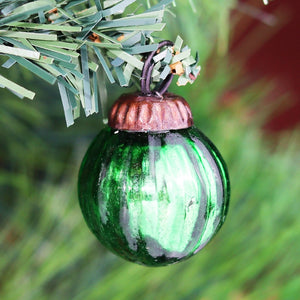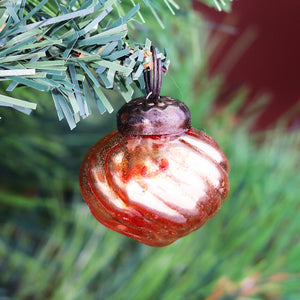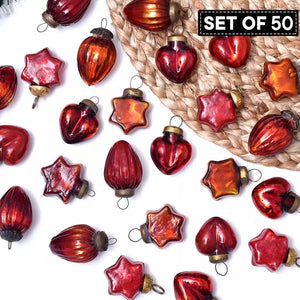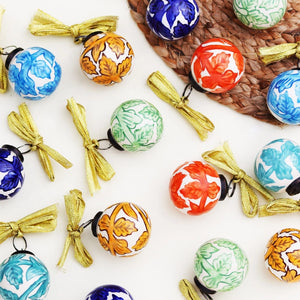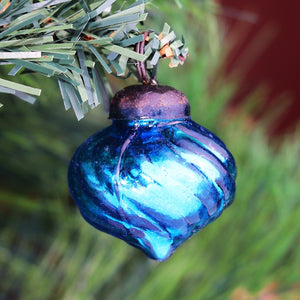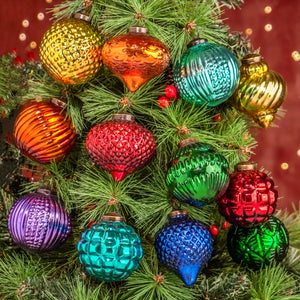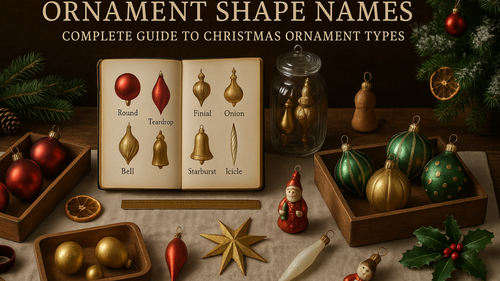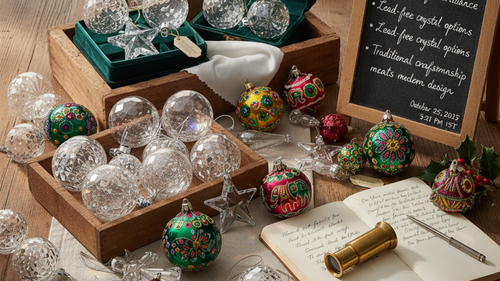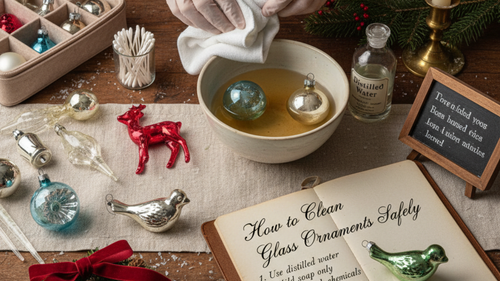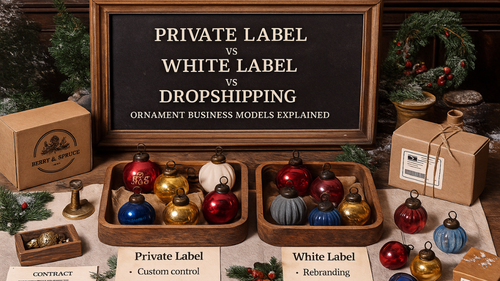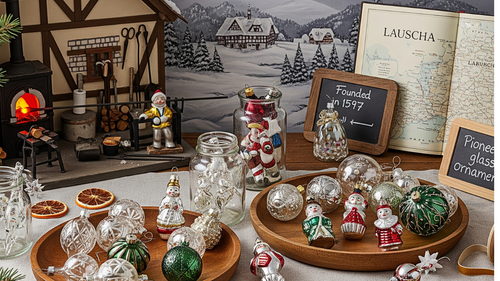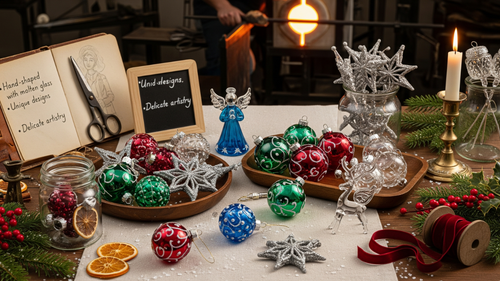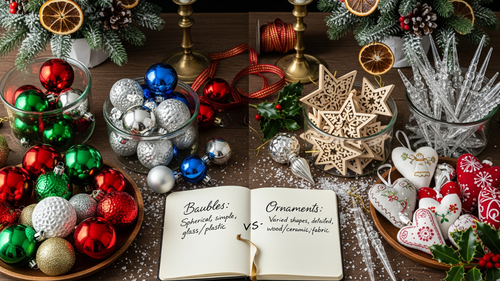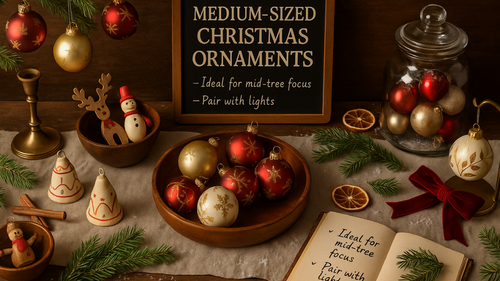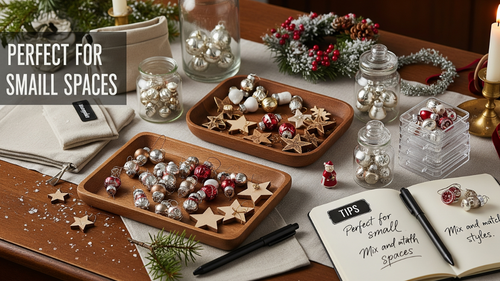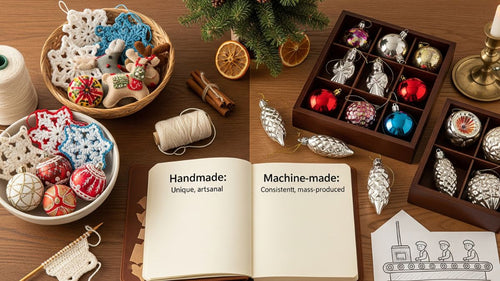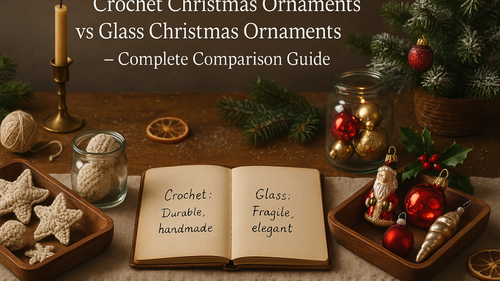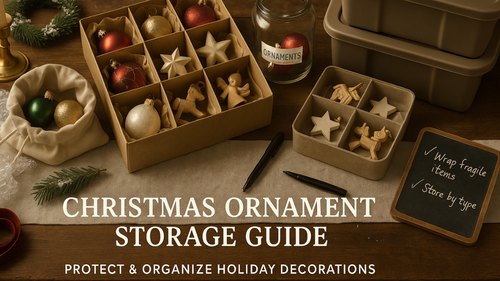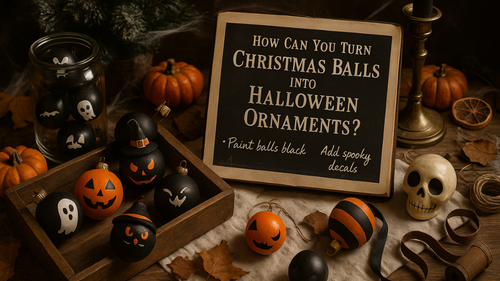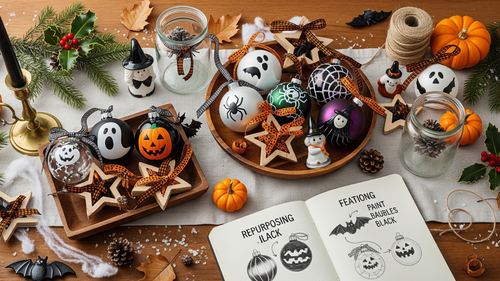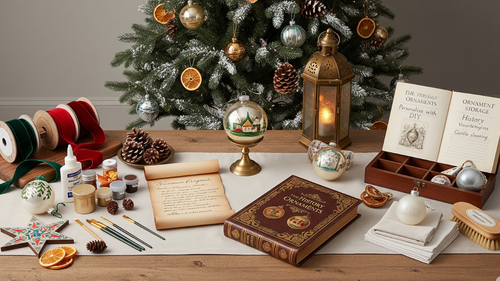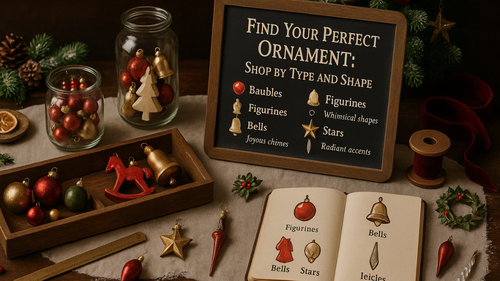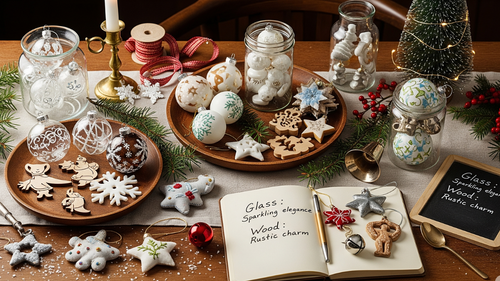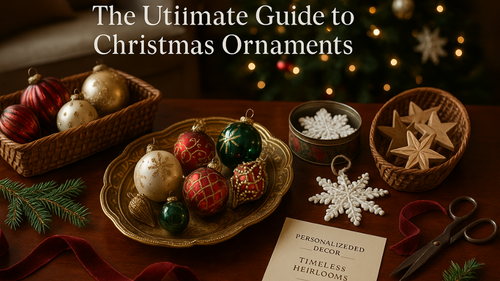Christmas ornaments are far more than mere decorations hanging from evergreen branches. They represent centuries of cultural heritage, religious beliefs, and family traditions that have traveled across continents and generations. From the delicate glass baubles first crafted in German villages to the vibrant paper lanterns adorning Chinese Christmas trees, each ornament tells a unique story of human creativity and cultural identity.
The art of Christmas tree decoration began as a deeply symbolic practice, where each ornament carried specific meanings related to prosperity, protection, and spiritual significance. The use of evergreen trees, wreaths, and garlands to symbolize eternal life was a custom of the ancient Egyptians, Chinese, and various other civilizations long before Christianity adopted these traditions.
In today's interconnected world, understanding these diverse ornament traditions offers us a window into different cultures while enriching our own holiday celebrations. Whether you're seeking to honor your ancestry, explore new decorating styles, or simply appreciate the rich tapestry of global Christmas customs, this exploration of international ornament traditions will transform how you view your Christmas tree.
Key Takeaways
- Christmas ornaments originated from ancient pagan traditions and evolved through Christian influence to become cultural symbols
- Germany pioneered the glass ornament tradition in the 1840s, creating the foundation for modern Christmas decorations worldwide.
- Each culture infuses unique materials, colors, and symbolic meanings into its ornament designs.
- International ornament traditions reflect local resources, climate, and spiritual beliefs.
- Incorporating global ornament styles creates meaningful, educational holiday displays.
- Modern families use international ornaments to teach cultural awareness and preserve heritage.
Unique Ornaments from Different Countries
Germany – The Birthplace of Glass Baubles
Germany holds the distinction of creating the world's first glass Christmas ornaments. In the small town of Lauscha during the mid-1800s, skilled glassblowers began crafting delicate Kugeln (balls) that would revolutionize Christmas decorating. These early ornaments were hand-blown using silver nitrate to create their signature reflective shine, making Christmas trees sparkle with unprecedented brilliance.
The tradition began when families couldn't afford expensive fruits and nuts to decorate their trees. Local artisans stepped in to create affordable glass alternatives that soon became more desirable than the original edible ornaments. Before Christmas lights, people often used foil to reflect light and make the tree sparkle! German glass ornaments symbolized wealth, prosperity, and divine protection for the household.
Today, authentic German ornaments are still hand-crafted using traditional techniques passed down through generations. The Lauscha region continues to produce some of the world's finest Christmas ornaments, maintaining the same attention to detail and artistic excellence that made them famous over 150 years ago. For collectors interested in authentic pieces, explore our glass ornament collection to find traditional German-style baubles.
Featured Products
Mexico – Vibrant Tin and Papier-Mâché Ornaments
Mexican Christmas ornaments burst with vibrant colors and joyful designs that reflect the country's rich artistic heritage. Hand-hammered tin stars, angels, and nativity scenes showcase the metalworking skills that have been refined over centuries. These ornaments often feature bright reds, blues, yellows, and greens that mirror the colors found in traditional Mexican textiles and pottery.
Papier-mâché ornaments draw inspiration from the beloved piñata tradition, creating three-dimensional figures that bring personality and whimsy to Christmas trees. Mexican artisans craft miniature animals, flowers, and religious symbols using recycled paper and natural paints, making each piece environmentally conscious and culturally authentic.
Since the 16th century, the poinsettia, a native plant from Mexico, has been associated with Christmas, carrying the Christian symbolism of the Star of Bethlehem, and this flower frequently appears as an ornament motif. Mexican ornaments symbolize joy, celebration, and the triumph of light over darkness during the winter season.
Featured Products
Ukraine – The Spider Web Ornament (Pavuchky)
Ukrainian Christmas tradition includes one of the most unique ornaments in the world: the Pavuchky or spider web ornament. This intricate glass creation stems from an ancient folklore tale about a poor widow who couldn't afford Christmas decorations. According to legend, spiders spun beautiful webs on her tree overnight, which transformed into silver and gold in the morning light.
These delicate ornaments require exceptional skill to create, as artisans must blow glass into incredibly fine, web-like patterns that capture and reflect light beautifully. The spider web ornament symbolizes good fortune, prosperity, and blessings for the coming year. Ukrainian families consider finding a spider web ornament on their tree to be an especially lucky omen.
The tradition has gained renewed significance in recent years as Ukrainian communities worldwide use these ornaments to maintain connections with their homeland and pass down cultural stories to younger generations. These delicate pieces require special handling - check our ornament storage guide for tips on preserving fragile cultural treasures.
Featured Products
Japan – Origami Ornament Traditions
Japanese Christmas celebrations, though relatively modern, have developed unique ornament traditions that blend Eastern aesthetics with Western holiday customs. In China they decorate with delicate paper lanterns hanging from trees, and similarly, Japanese families create intricate origami ornaments including paper cranes, fans, and cherry blossoms.
Paper cranes hold special significance in Japanese culture, symbolizing peace, longevity, and good fortune. Families often fold hundreds of miniature cranes to create elaborate garlands or individual ornaments that transform Christmas trees into works of art. The precise folding techniques required for origami ornaments reflect the Japanese values of patience, attention to detail, and respect for craftsmanship.
Modern Japanese ornament makers have expanded beyond traditional origami to include delicate paper flowers, miniature fans, and even tiny paper kimono ornaments that celebrate both Christmas and Japanese cultural identity. For those interested in creating their own cultural ornaments, visit our DIY ornament guides for step-by-step instructions.
Scandinavia – Straw and Wooden Ornaments
Scandinavian countries including Sweden, Norway, and Denmark have maintained strong connections to their agricultural roots through Christmas ornament traditions. Straw ornaments, particularly the beloved Julbock (straw goat), represent the harvest season and ancient winter solstice celebrations that predate Christianity in the region.
Carved wooden ornaments showcase the exceptional woodworking skills that Scandinavian craftspeople have perfected over centuries. These ornaments often feature minimalist designs inspired by Nordic folk art, including stylized reindeer, hearts, and geometric patterns painted in traditional red and white colors.
The simplicity of Scandinavian ornaments reflects the cultural values of functionality, natural beauty, and connection to the surrounding environment. Many families continue to hand-carve their ornaments each year, making Christmas tree decoration a meditative, family-bonding activity that honors both tradition and creativity. Browse our selection of ornaments by material to find wooden pieces that capture Scandinavian simplicity.
India – Rangoli-Inspired Paper Ornaments
Indian Christmas celebrations, particularly in regions with significant Christian populations, have developed unique ornament traditions that incorporate traditional artistic elements. Rangoli patterns, typically created with colored powders on floors during festivals, inspire intricate paper ornaments featuring geometric designs and vibrant colors.
Indian artisans create ornaments using traditional handmade paper, decorating them with gold leaf, sequins, and miniature mirrors that reflect light beautifully. These ornaments often incorporate religious symbols from both Christian and Hindu traditions, creating a unique fusion that reflects India's diverse spiritual landscape.
Lotus flower ornaments hold particular significance, symbolizing purity, enlightenment, and spiritual growth. Indian families often include small clay diyas (oil lamps) as tree ornaments, blending Christmas traditions with the Hindu festival of lights, Diwali.
United States – Innovation and Mass Production Heritage
American Christmas ornament traditions began with German immigrants who brought these practices with them to America in the 18th and 19th centuries. However, Americans soon developed their own distinctive ornament styles that reflected the country's spirit of innovation and industrial advancement.
In the 1880s, American F. W. Woolworth discovered Lauscha's baubles during a visit to Germany and made a fortune by importing the German glass ornaments to the United States. This commercial success led to the establishment of domestic ornament manufacturing, with William DeMuth creating the first American-made glass ornaments in New York in 1870.
American ornament traditions emphasize accessibility and variety, reflecting the country's diverse immigrant population and democratic ideals. Vintage American ornaments often feature patriotic themes, cartoon characters, and commercial imagery that captured popular culture moments. The development of unbreakable plastic ornaments in the mid-20th century made Christmas decorating safer and more affordable for families nationwide. Explore our comprehensive ultimate guide to Christmas ornaments to understand how American innovations influenced global decorating trends.
France – Elegant Santons and Religious Artistry
French Christmas ornament traditions center around the beloved santons, small hand-painted clay figures that represent nativity scenes and Provençal village life. These miniature sculptures, whose name means "little saints," originated in the late 18th century and have become integral to French Christmas celebrations.
French artisans create santons using traditional techniques passed down through generations, with each figure carefully painted to represent specific characters from the Christmas story as well as local tradespeople and villagers. The ornaments reflect French values of artisanal excellence, attention to detail, and reverence for both religious and secular community life.
Beyond santons, French Christmas ornaments often feature delicate fabric decorations, preserved flowers, and elegant metalwork that reflects the country's reputation for luxury craftsmanship. French families traditionally display ornaments in sophisticated arrangements that emphasize aesthetic harmony and cultural refinement.
Italy – Glass Mastery and Religious Symbolism
Italian Christmas ornament traditions showcase the country's exceptional glassmaking heritage, particularly from the island of Murano near Venice. Italian glass ornaments feature vibrant colors, intricate patterns, and sophisticated techniques that have been perfected over centuries of artistic innovation.
Religious symbolism plays a central role in Italian ornament design, with nativity scenes, angels, and saints prominently featured in traditional collections. Italian artisans create elaborate miniature nativity ornaments that tell the complete Christmas story through detailed figurines and architectural elements.
Regional variations reflect Italy's diverse cultural landscape, with northern regions emphasizing Alpine-inspired designs while southern areas incorporate Mediterranean themes and materials. Italian families often pass down ornament collections through generations, viewing them as family heirlooms that preserve both religious faith and artistic heritage. Discover various ornament types and shapes that reflect different regional Italian influences.
Russia – Orthodox Icons and Folk Art Traditions
Russian Christmas ornament traditions reflect the country's deep Orthodox Christian heritage and rich folk art legacy. Traditional Russian ornaments feature religious icons, Byzantine-inspired designs, and symbols that carry spiritual significance within the Orthodox faith tradition.
Matryoshka dolls, though not originally Christmas-specific, have become popular ornament themes that represent Russian cultural identity and family continuity. Russian artisans create miniature versions of these nested dolls as tree ornaments, often painting them with Christmas themes or religious imagery.
Lacquered wooden ornaments showcase traditional Russian folk art techniques, featuring intricate hand-painted scenes of winter landscapes, troika sleighs, and fairy tale characters. These ornaments often incorporate gold leaf and detailed brushwork that reflects the high artistic standards of Russian decorative arts traditions. For those interested in metal accents similar to Russian gold leaf work, browse our metal ornament collection.
Britain – Victorian Elegance and Royal Influence
British Christmas ornament traditions were significantly influenced by Queen Victoria and Prince Albert, who popularized the German Christmas tree custom in the mid-19th century. Victorian-era British ornaments emphasized elegance, propriety, and the domestic values that defined the period.
Traditional British ornaments include delicate lace decorations, miniature Union Jack flags, and ornaments featuring beloved British symbols such as robin redbreasts, holly, and ivy. The Victorian fascination with natural history led to ornaments featuring realistic depictions of British wildlife and botanical specimens.
British ornament makers developed distinctive techniques for creating ornaments from materials like pressed flowers, embroidered fabrics, and delicate wirework. These ornaments often incorporated sentimental elements such as family photographs, locks of hair, and personal mementos that reflected Victorian values of family devotion and remembrance.
Poland – Paper Cutting and Religious Devotion
Polish Christmas ornament traditions feature intricate paper cutting techniques known as Wycinanki, creating delicate lace-like decorations that transform simple materials into elaborate artistic displays. These paper ornaments often incorporate religious symbols, folk motifs, and geometric patterns that reflect Poland's strong Catholic heritage.
Traditional Polish ornaments also include hand-carved wooden figures, particularly those representing the nativity scene and Polish folk characters. Polish artisans create ornaments using regional woodcarving techniques that have been preserved through centuries of cultural transmission.
Straw ornaments hold special significance in Polish Christmas traditions, with families creating intricate geometric designs and figurative shapes that symbolize the humble circumstances of Christ's birth. These ornaments connect modern celebrations with agricultural traditions and emphasize spiritual values over material wealth.
Czech Republic – Bohemian Glass and Crystal Heritage
Czech Christmas ornament traditions build upon the country's renowned glassmaking heritage, particularly the Bohemian glass techniques that have made Czech crystal famous worldwide. Czech artisans create Christmas ornaments using traditional blown glass methods combined with innovative crystal cutting techniques.
Czech ornaments often feature geometric patterns, faceted surfaces, and prismatic effects that reflect and refract light beautifully. The country's glass masters have developed specialized techniques for creating ornaments with multiple colors, intricate internal designs, and surface textures that showcase exceptional technical skill.
Traditional Czech ornaments also incorporate elements from the country's rich cultural heritage, including folk music instruments, architectural details from Prague's historic buildings, and symbols from Czech fairy tales and legends. These ornaments serve as cultural ambassadors that share Czech artistic traditions with the wider world.
The History and Significance of Ornaments in Different Cultures
Ancient Pagan Roots and Early Symbolism
The tradition of decorating evergreen trees during winter celebrations extends far beyond Christian history. Ancient civilizations recognized the symbolic power of evergreen plants during the darkest months of the year. Egyptians, Romans, and Celtic peoples all incorporated evergreen branches, fruits, and symbolic objects into their winter solstice ceremonies.
Early ornaments served practical and spiritual purposes. Fruits, nuts, and small cakes provided sustenance during winter months while symbolizing hope for spring's return. Candles and reflective objects represented the triumph of light over darkness, a theme that remains central to Christmas celebrations worldwide.
Evergreens have been used in winter festivals for centuries by both pagans and Christians, with Christians believing the trees represent the birth and resurrection of Jesus and their everlasting life with God. This continuity between ancient and modern traditions explains why Christmas ornaments carry such deep emotional and spiritual significance across cultures.
Christian Influence and Religious Symbolism
As Christianity spread throughout Europe and beyond, existing winter celebration traditions were gradually incorporated into Christmas observances. Religious symbols became prominent ornament designs, with angels, stars, and nativity scenes taking precedence over purely decorative elements. Understanding these historical transitions helps modern collectors appreciate the deeper meanings behind their ornament choices - learn more in our complete guide to shopping Christmas ornaments by material.
The star ornament gained particular significance as a representation of the Star of Bethlehem that guided the wise men to Jesus. Angels symbolized the heavenly messengers who announced Christ's birth, while bell ornaments represented the joyful proclamation of the gospel message.
Different Christian denominations emphasized various ornament symbols based on their theological focus. Orthodox traditions often feature intricate crosses and icons, while Catholic communities might emphasize nativity scenes and saint figures. Protestant traditions sometimes favored simpler symbolic representations that emphasized scripture over iconography.
How Different Cultures Adapted Ornament Traditions
As Christmas traditions spread globally through trade, missionary work, and cultural exchange, local communities adapted ornament-making to reflect their available materials, artistic styles, and cultural values. This adaptation process created the rich diversity of Christmas ornament traditions we see today.
Island nations often incorporated seashells, coral, and ocean-themed designs into their Christmas ornaments. Mountain communities utilized pinecones, carved wood, and natural materials readily available in their environments. Urban areas developed more elaborate, manufactured ornaments that showcased technological advancement and artistic sophistication.
Colonial influences also shaped ornament traditions significantly. European colonizers brought their Christmas customs to new lands, where they mixed with indigenous artistic traditions and local materials to create hybrid ornament styles that remain popular today.

Incorporating International Ornaments into Holiday Decor
Creating a Globally Inspired Christmas Theme
Building a Christmas tree that celebrates international traditions requires thoughtful planning and cultural sensitivity. Start by researching the ornament traditions that resonate with your family's heritage or interests. Consider creating themed sections on your tree where different cultural ornaments can complement each other while maintaining their individual significance.
Color coordination plays a crucial role in successfully blending international ornaments. German glass ornaments in deep reds and golds pair beautifully with Mexican tin decorations, while Scandinavian wooden ornaments provide natural balance to more colorful pieces. Japanese origami ornaments can serve as elegant transitional elements that don't compete with bolder designs. Visit our shop by color collection to find pieces that complement your international theme.
Consider the scale and proportion of different ornament styles when planning your international display. Delicate Ukrainian spider web ornaments require careful placement where they won't be overshadowed by larger pieces, while substantial wooden Scandinavian ornaments can anchor sections of your tree and provide visual weight. Browse our shop by size collection to find ornaments in proportions that work well together.
Balancing Traditional and Modern Elements
Successfully incorporating international ornaments into modern holiday decor involves finding balance between honoring traditional designs and meeting contemporary aesthetic preferences. Many families choose to dedicate specific trees or prominent tree sections to showcase international ornaments, while using modern decorations elsewhere in their holiday display.
Lighting considerations become particularly important when displaying international ornaments. Traditional German glass ornaments were designed to reflect candlelight, so warm white LED lights often enhance their appearance better than cool white or colored lights. Paper-based ornaments from Asian traditions may require more subtle lighting to prevent fading or damage.
Consider investing in quality display pieces that honor the craftsmanship of traditional ornaments. Simple wooden or metal ornament stands can showcase particularly special international pieces even when the tree isn't up, extending the educational and decorative value of your collection throughout the year.
Where to Source Authentic International Ornaments
Finding authentic international ornaments requires research and often involves connecting with cultural organizations, specialty import shops, or artisan communities. Many cities with significant immigrant populations maintain cultural centers that sell traditional crafts during holiday seasons.
Online marketplaces have made authentic international ornaments more accessible, but buyers should research sellers carefully to ensure they're purchasing genuine cultural pieces rather than mass-produced imitations. Look for sellers who provide information about the ornaments' cultural significance, materials, and creation process.
Consider supporting fair trade organizations that work directly with artisan communities to ensure your ornament purchases provide economic benefits to the cultures you're celebrating. These organizations often provide detailed background information about ornament traditions and their contemporary significance.
Hosting an International Ornament Exchange
Planning a Culturally Educational Holiday Event
An international ornament exchange creates opportunities for community learning while building meaningful holiday traditions. Begin planning your event by inviting friends, family members, and community members who represent different cultural backgrounds or have interest in exploring global Christmas traditions.
Encourage participants to bring ornaments that represent their cultural heritage or a tradition they've researched and want to share. Provide guidelines asking for brief written descriptions of each ornament's cultural significance, traditional uses, and any personal family stories connected to the tradition.
Create a welcoming environment that encourages storytelling and cultural exchange. Set up display areas where participants can showcase their ornaments while sharing stories, and consider providing world maps or cultural reference materials that help contextualize different traditions.
Guidelines for Respectful Cultural Exchange
Cultural sensitivity remains paramount when organizing international ornament exchanges. Emphasize that participants should focus on sharing traditions they have genuine connections to or have researched respectfully, rather than appropriating cultural symbols without understanding.
Provide guidelines that encourage participants to share the educational aspects of ornament traditions, including historical context, symbolic meanings, and contemporary significance within their originating cultures. This approach transforms the exchange from simple gift-giving into meaningful cultural education.
Consider inviting cultural educators, community leaders, or artisans to participate as guest speakers who can provide authentic insights into ornament traditions. Their presence adds credibility to the educational aspects of your event while ensuring cultural accuracy in the information being shared.
Creating Lasting Memories and Traditions
Document your international ornament exchange through photography and written records that capture both the ornaments and the stories behind them. Create a collective journal or scrapbook that participants can reference in future years, building institutional memory for your cultural exchange tradition.
Encourage participants to research new cultural traditions each year, gradually expanding the global scope of your ornament exchange. This ongoing educational component transforms a single event into a sustained cultural learning experience that deepens over time.
Consider establishing partnerships with local cultural organizations, museums, or educational institutions that can provide ongoing resources and expertise for your international ornament exchange tradition. These partnerships often lead to expanded programming and community engagement opportunities.
Learning About Holiday Customs Through Ornaments
International Christmas Ornament Traditions Comparison
Understanding the diverse world of Christmas ornament traditions becomes clearer when we compare different countries side by side. The following table illustrates how cultural values, available materials, and historical influences shape ornament designs across various nations:
| Country | Signature Ornament | Cultural Meaning | Primary Material |
|---|---|---|---|
| Germany | Glass Kugeln (Baubles) | Wealth, prosperity, divine protection | Blown glass with silver nitrate |
| Mexico | Tin Stars & Papier-Mâché Figures | Joy, celebration, triumph of light | Hand-hammered tin, recycled paper |
| Ukraine | Pavuchky (Spider Web Ornaments) | Good fortune, prosperity, blessings | Intricate blown glass |
| Japan | Origami Cranes & Fans | Peace, longevity, good fortune | Traditional handmade paper |
| Scandinavia | Straw Julbock & Wooden Figures | Harvest celebration, winter folklore | Natural straw, carved wood |
| India | Lotus Flowers & Diyas | Purity, enlightenment, spiritual growth | Handmade paper with mirrors, clay |
| United States | Patriotic Themes & Character Ornaments | Innovation, accessibility, popular culture | Glass, plastic, mixed materials |
| France | Santons (Clay Figures) | Religious devotion, community life | Hand-painted clay |
| Italy | Murano Glass Nativity Scenes | Religious symbolism, artistic heritage | Venetian blown glass |
| Russia | Matryoshka Dolls & Icon Ornaments | Family continuity, Orthodox faith | Lacquered wood with gold leaf |
| Britain | Robin Redbreasts & Lace Decorations | Victorian elegance, domestic virtue | Pressed flowers, embroidered fabric |
| Poland | Wycinanki Paper Cuts & Straw Ornaments | Religious devotion, humble origins | Intricate paper cutting, natural straw |
| Czech Republic | Bohemian Crystal Ornaments | Artistic excellence, light reflection | Cut crystal, faceted glass |
This comparison reveals fascinating patterns in how different cultures express their values through Christmas ornaments. Northern European countries often emphasize natural materials and minimalist designs, while Mediterranean cultures tend toward religious symbolism and artistic elaboration. Asian traditions frequently incorporate paper crafts and geometric patterns, while the Americas show more diversity in materials and commercial influences.
Using Ornaments as Educational Tools for Families
Christmas ornaments serve as tangible connections to world cultures, making them excellent educational tools for families with children. Each ornament becomes a conversation starter about geography, history, artistic traditions, and cultural values, transforming Christmas tree decorating into immersive cultural education.
Create family traditions around researching new cultural ornaments each year. Children can choose countries to study, learning about their Christmas traditions, artistic styles, and cultural significance of different ornament types. This research process develops critical thinking skills while building cultural awareness and appreciation. Many families find inspiration in seasonal activities like transforming decorations - check out our guide on turning Christmas balls into Halloween ornaments for creative repurposing ideas.
Develop storytelling traditions around your international ornament collection. Each ornament can become the centerpiece of stories about the people who created them, the cultural traditions they represent, and their journey to your family's Christmas tree. These narratives help children understand the human connections behind cultural artifacts.
School and Community Educational Programs
Educational institutions increasingly recognize the value of using cultural artifacts like Christmas ornaments to teach global awareness and cultural appreciation. Schools can develop classroom ornament collections that represent the diverse backgrounds of their student populations while introducing children to traditions from around the world.
Community centers and libraries can host ornament-making workshops that teach traditional crafting techniques from different cultures. These hands-on experiences provide deeper understanding of the time, skill, and cultural knowledge required to create authentic ornaments, fostering appreciation for global artistic traditions.
Museums and cultural institutions often develop holiday exhibitions featuring international ornament collections, providing opportunities for formal and informal educational experiences. These exhibitions can complement classroom learning while offering families enriching holiday activities.
Building Cultural Awareness and Appreciation
International ornament collections naturally promote conversations about cultural diversity, artistic traditions, and global interconnectedness. Families report that their ornament traditions help children develop more nuanced understanding of world cultures beyond stereotypes or superficial knowledge.
The tactile nature of ornaments makes cultural learning more memorable and meaningful than abstract lessons. Children who handle delicate Ukrainian glass ornaments or sturdy Scandinavian wooden decorations develop visceral understanding of different cultures' artistic values, available materials, and crafting traditions.
International ornament traditions also provide opportunities to discuss contemporary global issues, immigration stories, and cultural preservation challenges. These conversations help families understand their place in the broader global community while developing empathy for diverse cultural experiences.
What Are the Latest Trends in Global Ornament Traditions?
Contemporary Fusion and Hybrid Traditions
Modern globalization has created new ornament traditions that blend multiple cultural influences into contemporary hybrid designs. Second and third-generation immigrant families often create ornament traditions that honor their ancestral cultures while reflecting their current cultural contexts, resulting in innovative fusion styles.
Artisan communities worldwide increasingly collaborate across cultural boundaries, sharing techniques and design elements to create ornaments that represent global artistic exchange. These collaborative traditions reflect contemporary reality where cultural boundaries are more fluid and interconnected than in previous generations.
Social media platforms have accelerated the sharing of ornament-making techniques and cultural traditions, allowing artisans and families worldwide to learn from each other and adapt traditional practices for modern contexts. This digital cultural exchange continues to influence how ornament traditions evolve and spread.
Sustainable and Eco-Friendly International Ornaments
Environmental consciousness has influenced international ornament traditions as communities seek ways to maintain cultural practices while reducing environmental impact. Many traditional ornament-making techniques already emphasized sustainability through use of natural, locally-sourced materials and repairable designs.
Contemporary artisans often highlight the environmental benefits of traditional ornament-making techniques compared to mass-produced decorations. Hand-crafted ornaments typically last for generations, use sustainable materials, and support local economic systems rather than global manufacturing chains. For those interested in seasonal versatility, explore our Halloween décor inspiration blog to learn about repurposing ornaments year-round.
Families increasingly choose international ornaments as alternatives to disposable holiday decorations, viewing their cultural and artistic value as justification for higher initial costs and long-term investment in sustainable holiday traditions.
Digital Preservation and Virtual Cultural Exchange
Cultural organizations and artisan communities use digital platforms to preserve traditional ornament-making knowledge and share it with global audiences. Virtual workshops, online tutorials, and digital archives ensure that traditional techniques remain accessible even when physical communities are dispersed.
Augmented reality and digital storytelling technologies increasingly accompany ornament collections, providing immersive cultural context and educational content that enhances the traditional ornament experience. These technologies help bridge generational gaps in cultural knowledge transmission.
Global online marketplaces have made authentic international ornaments more accessible to families worldwide while providing economic opportunities for traditional artisan communities. This digital commerce supports cultural preservation through economic incentives for maintaining traditional practices. For those looking to expand their collections, visit our main ornament collections to discover pieces from various cultural traditions.
Frequently Asked Questions
Which country started the glass ornament tradition?
Germany pioneered the glass ornament tradition in the town of Lauscha during the 1840s. Skilled glassblowers created the first Kugeln (glass balls) using traditional techniques that included silver nitrate for reflective surfaces. These German innovations established the foundation for modern Christmas ornament manufacturing worldwide and remain highly prized for their craftsmanship and historical significance.
What is the meaning of the spider web ornament in Ukraine?
Ukrainian spider web ornaments (Pavuchky) symbolize good fortune, prosperity, and divine blessings for the coming year. According to folklore, a poor widow discovered beautiful spider webs on her Christmas tree that transformed into precious metal, bringing prosperity to her family. Finding these delicate glass ornaments on a tree is considered an especially lucky omen in Ukrainian tradition.
Are Christmas ornament traditions different across cultures?
Yes, Christmas ornament traditions vary significantly across cultures, reflecting local materials, artistic styles, religious beliefs, and historical influences. While some common themes exist worldwide, such as stars and angels, each culture has developed unique ornament styles that express their specific values and available resources. These differences create opportunities for cultural learning and appreciation through ornament collecting and display.
Can international ornaments be combined on one Christmas tree?
Absolutely! Combining international ornaments on one tree creates a multicultural display that celebrates global diversity while telling the story of our interconnected world. Successful integration requires attention to color coordination, scale balance, and respectful cultural representation. Many families find that international ornament collections become conversation starters and educational tools that enhance their holiday celebrations.
How can I learn more about specific ornament traditions?
Research ornament traditions through cultural centers, museums, libraries, and reputable online sources. Connect with cultural organizations in your community that represent different ethnic groups, as they often maintain knowledge about traditional crafts and their significance. Consider visiting DIY Ornament Ideas for hands-on learning opportunities and cultural crafting techniques.
Where can I purchase authentic international ornaments?
Authentic international ornaments are available through cultural centers, specialty import shops, artisan markets, and fair trade organizations that work directly with traditional craftspeople. Online platforms offer broader selections, but research sellers carefully to ensure authenticity. Support businesses that provide cultural context and fair compensation to artisan communities. Check our Shop Glass Ornaments and Shop Metal Ornaments collections for authentic pieces.
What materials are commonly used in different cultural ornament traditions?
Ornament materials vary by culture and available resources. German traditions emphasize blown glass with metallic finishes, while Scandinavian ornaments feature carved wood and woven straw. Mexican artisans work with hammered tin and papier-mâché, Japanese craftspeople create intricate paper designs, and Indian artisans use handmade paper with mirrors and sequins. For more information about materials, explore our guide on shopping Christmas ornaments by material.
How do I properly care for delicate international ornaments?
Delicate international ornaments require special care based on their materials and construction. Store glass ornaments in individual wrapping to prevent breakage, keep paper ornaments in low humidity environments to prevent deterioration, and protect metal ornaments from moisture to prevent tarnishing. Learn more about proper care in our Christmas ornament storage guide.
Conclusion
Christmas ornament traditions around the world reveal the beautiful diversity of human creativity and cultural expression during the holiday season. From the precision of German glassblowing to the vibrant artistry of Mexican metalwork, each tradition carries forward centuries of cultural heritage while continuing to evolve in contemporary contexts.
Understanding these global traditions enriches our own holiday celebrations by connecting us to the broader human experience of marking winter's passage with beauty, symbolism, and hope. Whether we choose to incorporate international ornaments into our decorating schemes, host cultural exchange events, or simply appreciate the artistry and meaning behind different traditions, we participate in a global conversation about creativity, spirituality, and cultural identity.
The future of international ornament traditions lies in balance between preservation and adaptation. As communities worldwide continue to blend traditional practices with contemporary life, new hybrid traditions emerge that honor ancestral wisdom while reflecting modern realities. These evolving traditions ensure that Christmas ornaments will continue to serve as tangible connections between past and present, local and global, individual and community.
By exploring and celebrating international ornament traditions, we transform our Christmas trees from simple decorative displays into educational tools, cultural bridges, and symbols of our interconnected global community. Each ornament becomes a ambassador for its culture, sharing stories, values, and artistic traditions that might otherwise remain unknown to us. For additional creative inspiration, explore our guide on repurposing Christmas garland to extend the joy of holiday decorations.
As you plan your holiday decorating this year, consider incorporating elements from global ornament traditions that resonate with your interests, heritage, or curiosity. Whether you choose a single special piece from another culture or develop an extensive international collection, you'll discover that Christmas ornaments offer pathways to cultural understanding, artistic appreciation, and meaningful holiday celebration that extends far beyond their decorative function.
For those interested in expanding their ornament collections or learning more about traditional crafting techniques, explore our comprehensive resources including The Ultimate Guide to Christmas Ornaments and discover pieces organized by color, size, and type and shape to create your own internationally-inspired holiday display. For bulk orders or special requests, contact our team through our bulk orders page.
